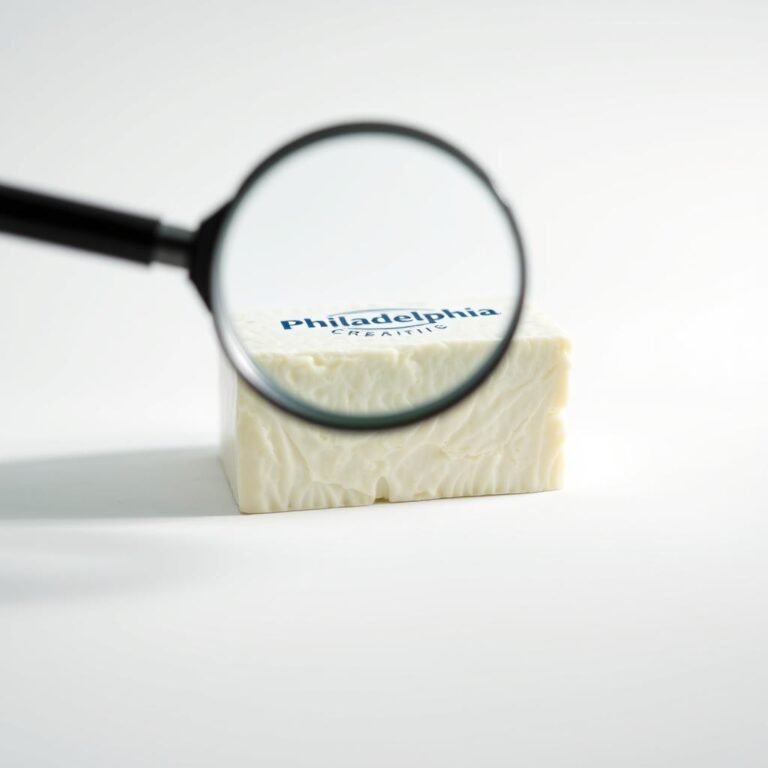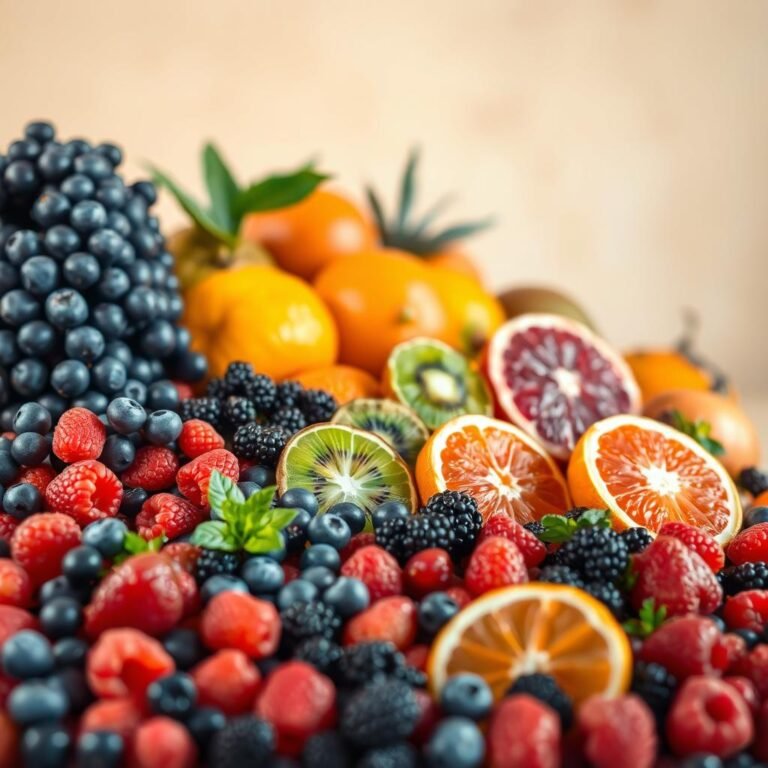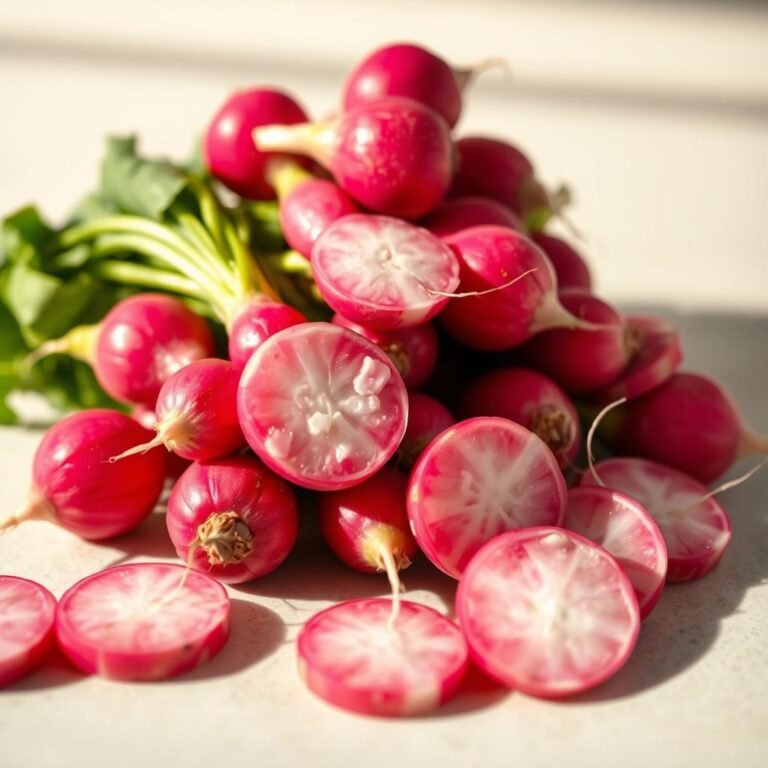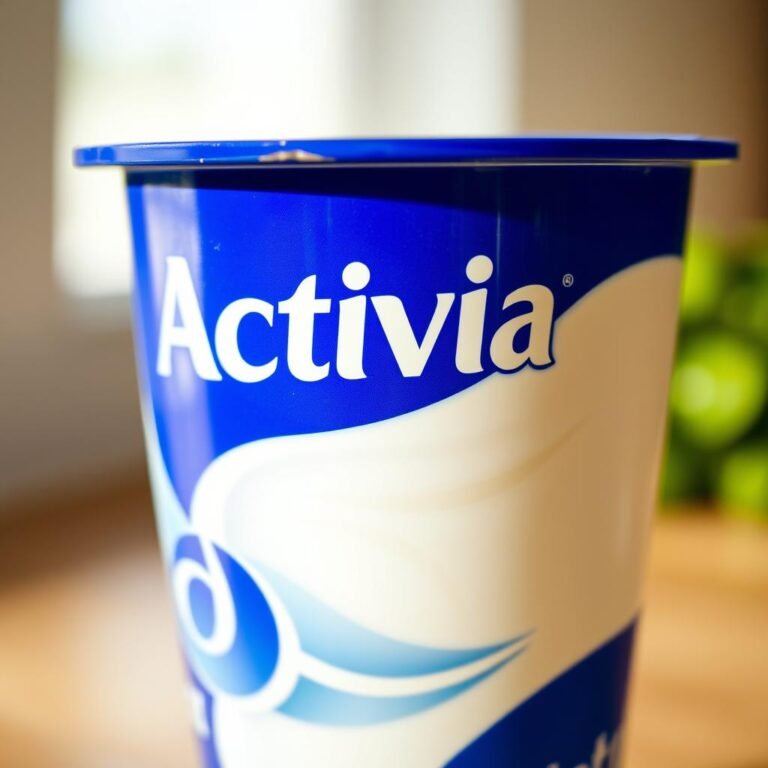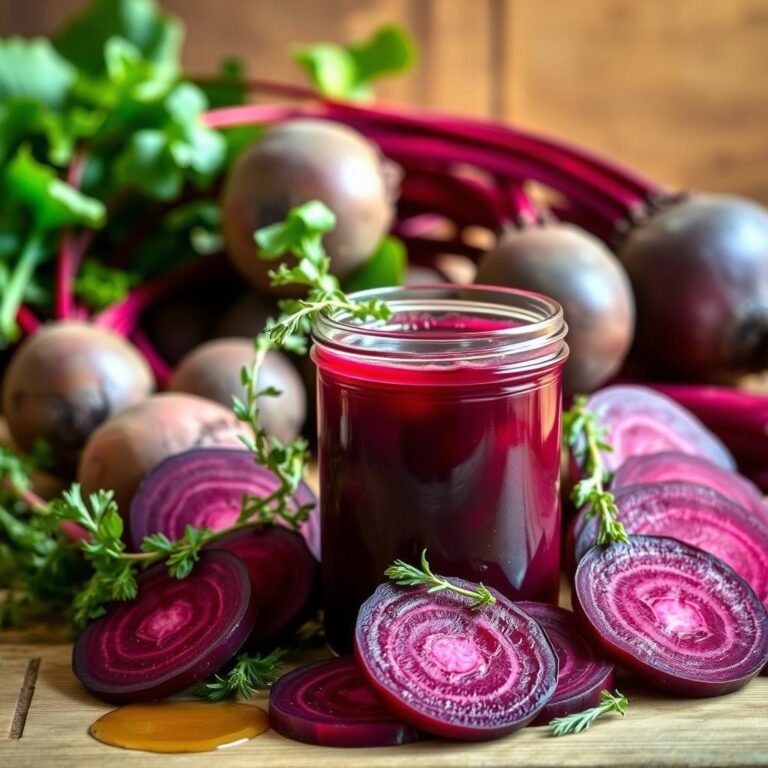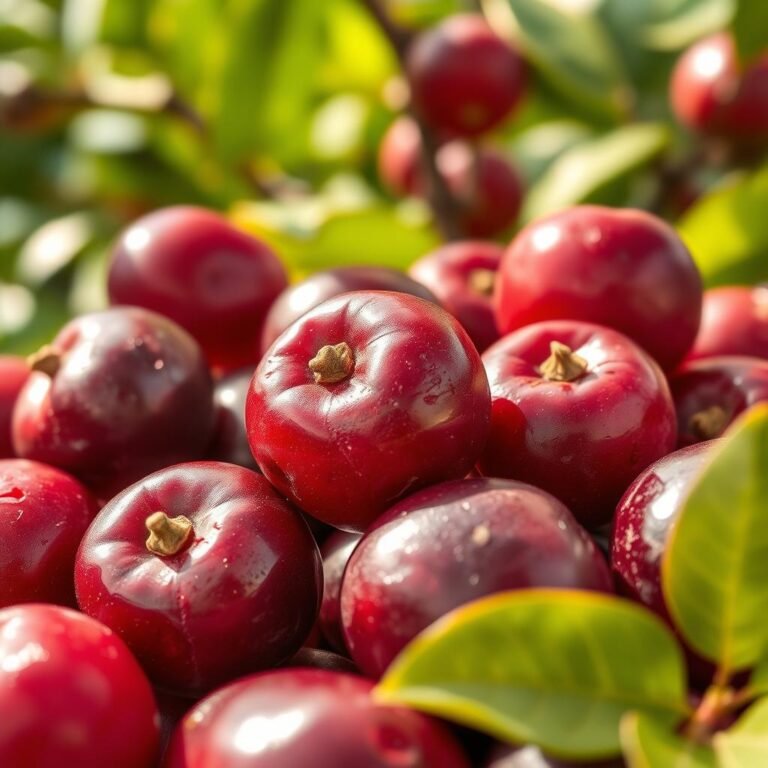How to Make Fermented Salsa for a Stronger Immunity
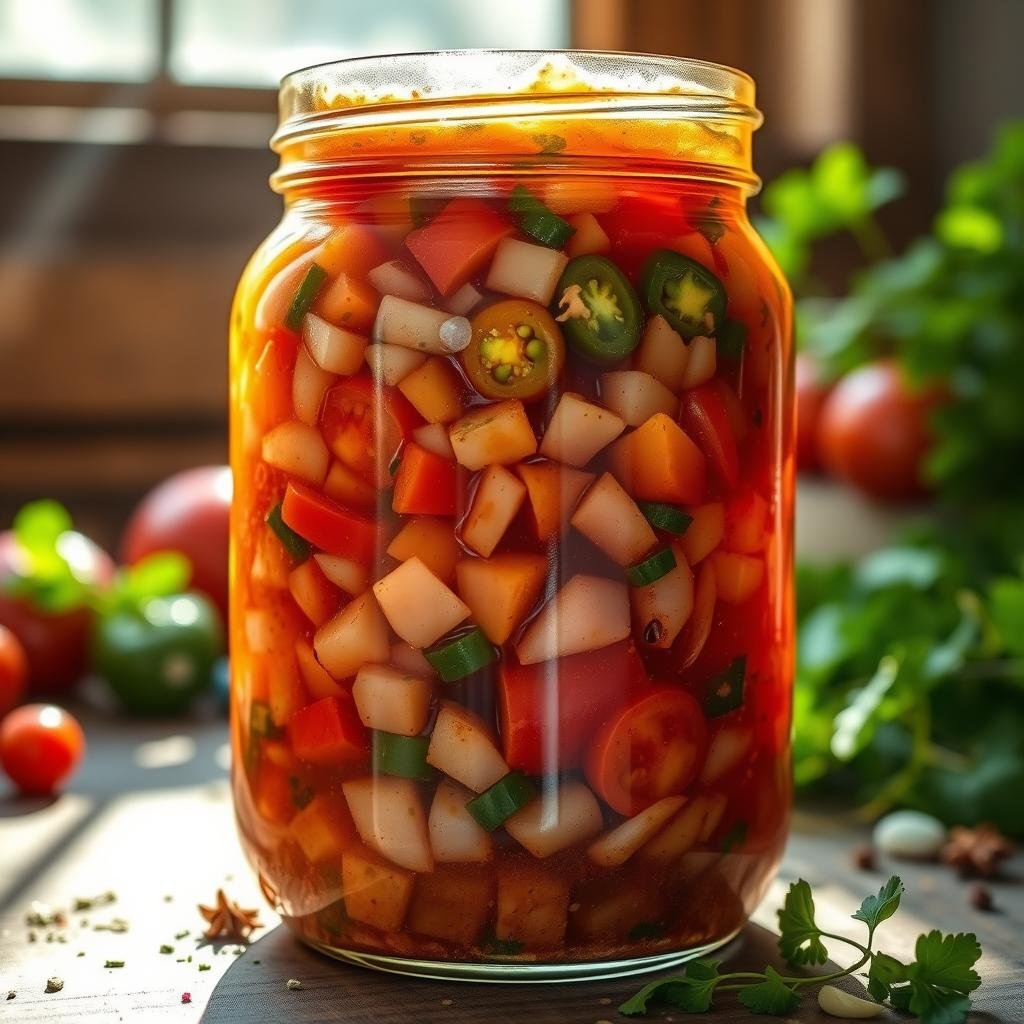
Fermented salsa is known for its tangy taste and health perks. It’s easy to make at home, even if you’re new to cooking. This guide shows you how to make a tasty, probiotic-rich salsa using fresh tomatoes, garlic, onions, cilantro, salt, and lime juice.
By making your own fermented salsa, you can improve your gut health. This delicious, nutritious condiment can help strengthen your immunity. Let’s explore how to create your own probiotic salsa.
Benefits of Fermented Salsa for Your Immune System
Eating fermented salsa can really help your immune system. It’s all about how it affects your gut health and overall wellness.
Introduction to Gut Health
Your gut health is key to your body’s well-being. A healthy gut has lots of good bacteria. Fermented salsa adds these good bacteria to your gut.
This not only helps with digestion but also reduces inflammation and boosts nutrient absorption.
How Probiotics Support Immunity
Fermented salsa is full of probiotics. These probiotics make your gut stronger. They keep bad bacteria out and help your body fight off sickness.
They also help your body make more antibodies and white blood cells. This makes your immune system stronger.
Comparing Fermented Salsa to Probiotic Supplements
Probiotic supplements are common, but they’re not as good as fermented foods. Fermented salsa is tasty and packed with nutrients. It’s easy to add to your meals.
Unlike supplements, fermented salsa has many types of probiotics. These work together to improve your gut health. Plus, it lasts longer, so you can enjoy it for weeks.
For a simple recipe to make it at home, check out this guide.
Ingredients Needed for Homemade Fermented Salsa
To make your own lacto-fermented salsa, you need the right stuff. You’ll need fresh veggies and special salt. Each one is important for making the salsa.
Fresh Vegetables and Their Benefits
Great fermented salsa starts with fresh veggies. You’ll need tomatoes, onions, and peppers. They add vitamins, minerals, and flavor to your salsa.
Choosing the Right Salt for Fermentation
Salt is key for fermented salsa. It helps the fermentation and keeps it fresh. Use sea salt or Himalayan pink salt. They taste better and are healthier.
Optional Add-ins for Customizing Your Salsa
Want to make your salsa your own? Add fresh herbs like cilantro or basil. Spices like garlic or cumin can also add flavor. Try mango or pineapple for a sweet twist. These extras let you make your salsa special while keeping it healthy.
The Easy Process of Making Fermented Salsa
Making fermented salsa is easier than you think. With a simple recipe, you can turn fresh veggies into a healthy condiment. Start by chopping tomatoes, onions, peppers, and garlic. It’s important to use fresh veggies for the best taste and health benefits.
Then, mix the chopped veggies with the right amount of salt. Salt helps preserve and ferment the mix. Let it sit at room temperature to start the fermentation.
To make fermented salsa, you only need basic kitchen tools. You’ll need a clean jar, a weight, and a lid. These tools help keep the mix fresh and prevent contamination.
In short, making fermented salsa is easy and rewarding. Just follow these simple steps. Soon, you’ll enjoy the tasty tang of your homemade salsa.
A Step-by-Step Guide to Fermenting Salsa at Home
Making homemade fermented salsa is fun and rewarding. Just a few steps will keep your salsa tangy and healthy.
Preparing Your Workspace and Tools
Start by cleaning your workspace. Make sure all tools and containers are germ-free. You’ll need knives, cutting boards, bowls, and a mason jar for the salsa. A clean area is key for good fermentation and to stop bad bacteria.
Mixing the Ingredients
Get your ingredients ready: fresh tomatoes, bell pepper, jalapeno, onion, lemon or lime, garlic, cilantro, and salt. Cut all veggies into small pieces and mix them in a big bowl. Add lemon or lime juice, garlic, cilantro, and salt. Mix well. How to ferment salsa means the salt must be spread evenly for fermentation.
Fermenting and Storing the Salsa
Put the mix into a quart mason jar with a canning funnel. Press it down with a weight or big veggie to keep all under liquid. Use a canning lid but release gas daily if it’s tight. Let it sit on the counter for 2 to 3 days. In warmer places, it might only take 2 days.
Once fermented, put the salsa in the fridge. It will keep getting better and last months. It’s a tasty, healthy addition to your meals. See this guide for more on fermenting salsa.
Understanding Lacto-Fermentation
Lacto-fermentation is an old method that uses salt to help good bacteria grow. This method keeps the salsa fresh and makes it healthier by adding vitamins and enzymes.
What is Lacto-Fermentation?
Lacto-fermentation uses salt and filtered water to create a special environment. This environment is perfect for good bacteria to grow. These bacteria turn sugars into lactic acid, which keeps the food fresh and adds a tangy taste.
The Science Behind Fermentation
Fermentation is all about creating the right conditions for good bacteria to grow. The best temperature for this is between 60-75 degrees Fahrenheit. It’s important to keep the environment without oxygen to stop mold and rot.
Fermentation can take a few days, but it can go on forever. This makes the food taste better and more nutritious.
The Role of Salt in Fermentation
Salt is key in lacto-fermentation. It helps keep the vegetables’ texture and stops bad bacteria from growing. It also helps the good bacteria grow.
The right amount of salt is about 2.5% of the total weight. For example, if you have 1000 grams of vegetables and water, you need 25 grams of salt. This ensures the fermentation works well. For more info, check out this guide.
| Key Factors | Description |
|---|---|
| Temperature | 60-75°F |
| Salt Concentration | 2.5% of ferment weight |
| Fermentation Time | 3 days to indefinite |
| Environment | Anaerobic |
Safety Tips for Fermented Salsa
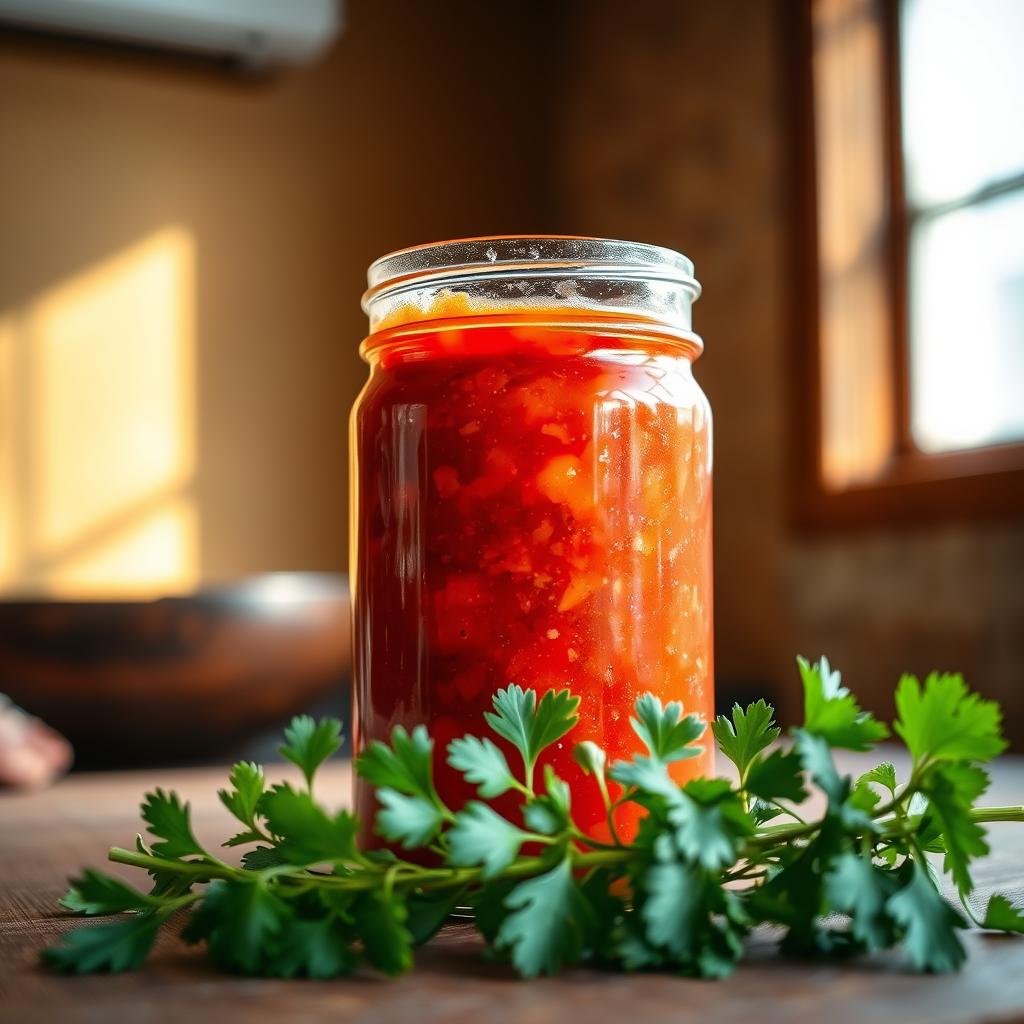
To make a safe fermented salsa, you need to know a few things. It’s important to spot mold and kahm yeast and keep the environment right. This way, you get a healthy and tasty salsa.
How to Spot Mold and Kahm Yeast
It’s key to know how to spot mold and kahm yeast. Mold looks like fuzzy, colorful spots (green, black, or pink) and means it’s gone bad. Kahm yeast, on the other hand, is a white film on the brine’s surface and is harmless.
By checking often and handling it right, you can stop these problems. This keeps your ferment safe and good to eat.
Burping Your Ferment
“Burping” means letting out the gases from fermentation. It stops the container from getting too full. This is a big part of keeping your ferment safe.
By burping your ferment often, you keep the salsa safe and tangy. A well-controlled environment is key to a great salsa.
Traditional Fermented Salsa: A Historical Perspective
Fermenting foods is an old practice. It helps keep food fresh and adds flavor. This journey shows how cultures used fermentation to make tasty, healthy foods like salsa.
Origins of Lacto-Fermentation
People have been fermenting foods for thousands of years. They found it kept food fresh and made it healthier. Lacto-fermentation uses bacteria to make lactic acid, a natural preservative.
Every culture has its own way of making fermented salsa. They used different methods and ingredients.
Traditional Methods vs. Modern Techniques
Even though the basics of fermentation are the same, the ways have changed. Old times used natural salt and local veggies in clay pots. These methods focused on using natural things and slow fermentation.
Now, we use stainless steel, airlocks, and control the temperature. This makes fermented salsa taste great and ready faster. Here’s a look at old vs. new ways to make salsa:
| Aspect | Traditional Methods | Modern Techniques |
|---|---|---|
| Containers | Earthenware pots | Stainless steel containers |
| Fermentation Time | Weeks | Days |
| Temperature Control | Natural variations | Controlled environments |
| Tools | Hand-chopped ingredients | Food processors |
Why Fermented Salsa Tastes Amazing
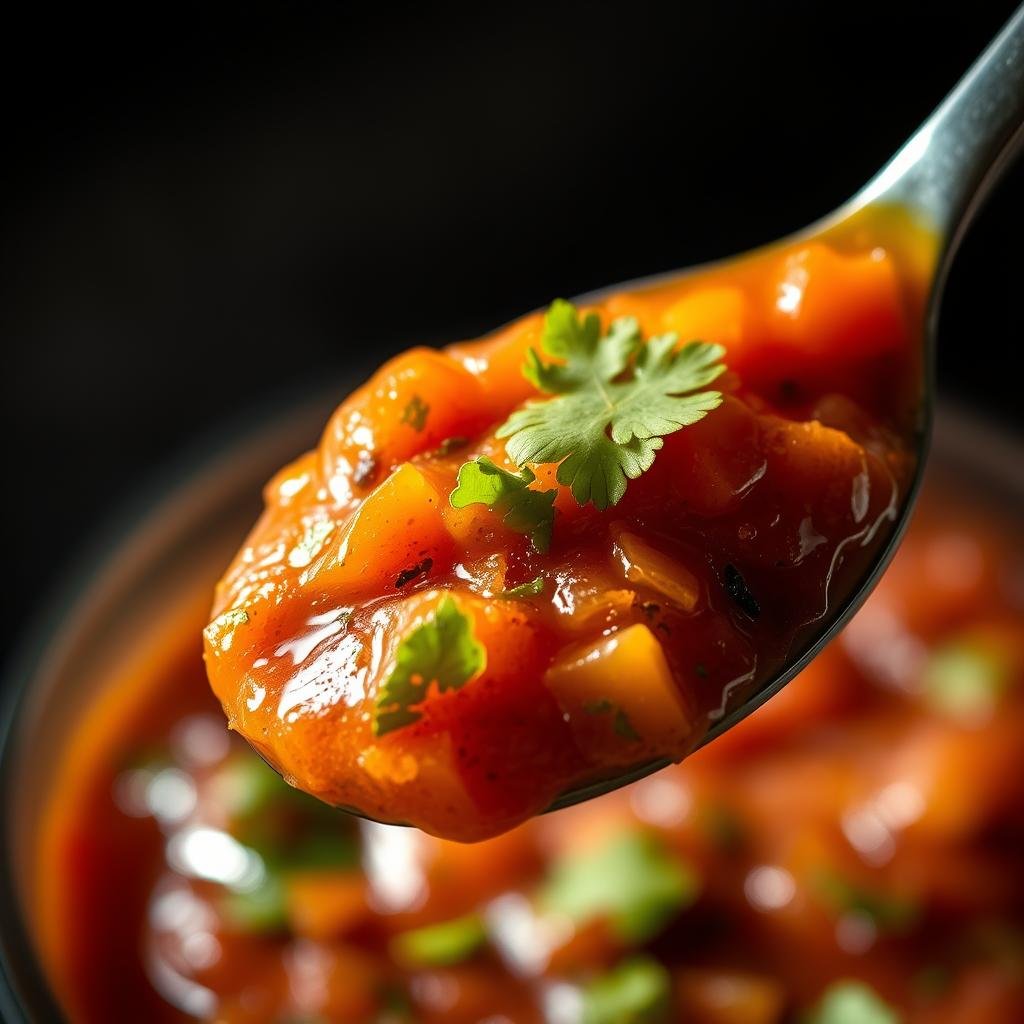
Fermented salsa has a unique taste. It’s tangy and different from regular salsa. This comes from the fermentation process, which makes the flavors stronger.
The Tangy Flavor Profile
Fermentation turns natural sugars into lactic acid. This gives the salsa a zesty taste. It’s great for adding flavor to any dish.
How Fermentation Enhances Taste
Beneficial bacteria grow during fermentation. They make the salsa’s flavor deeper and more complex. This makes fermented salsa a hit with those who love strong tastes.
For a detailed recipe on how to make your own fermented salsa, you can check out this guide.
Fermented Salsa and Its Extended Shelf Life
Fermenting salsa makes it last longer. The lacto-fermentation process stops bad bacteria from growing. This keeps the salsa fresh and tasty for a long time.
Preserving salsa is easy with fermentation. The acidic environment stops harmful bacteria. This keeps the salsa good and tasty for months in the fridge.
With fermented salsa, you can enjoy it for a longer time. It’s good for your gut and helps reduce waste. You’ll always have a tasty, healthy condiment ready.
Lacto-fermentation also keeps the salsa’s nutrients. The live cultures are good for your gut. This makes the salsa a great choice for a healthy diet.
Learning to ferment salsa is a smart move. It adds a tasty probiotic to your meals. Plus, it lasts longer and tastes great every time.
Delicious Ways to Enjoy Fermented Salsa
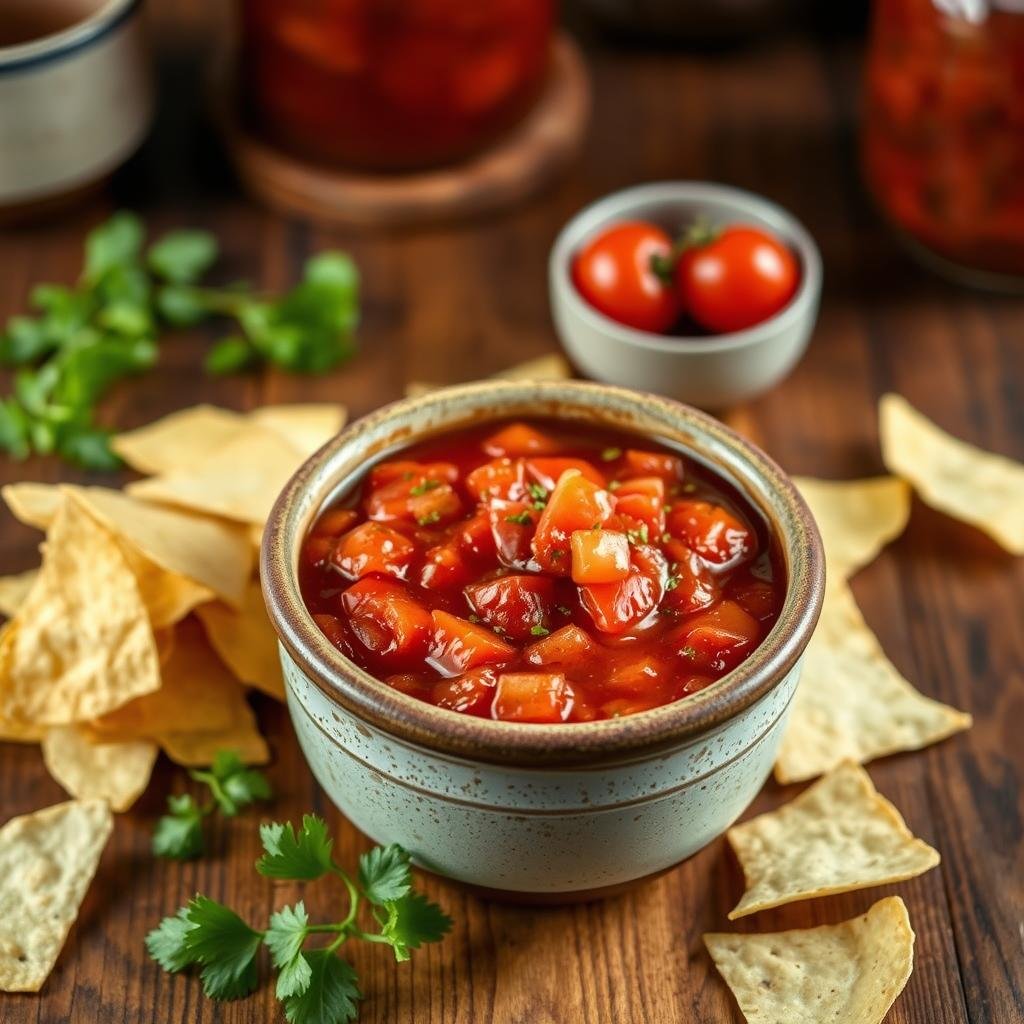
Adding fermented salsa to your meals gives a tangy taste and probiotics. It’s great for snacks or full meals. It makes your food more exciting.
Using Salsa in Tacos and Tortillas
Tacos and tortillas get better with fermented salsa. It adds a zesty flavor that regular salsa can’t. Try it at your next taco night for a fresh taste.
Pairing with Chips and Guacamole
Chips and guacamole need fermented salsa to be complete. It adds probiotics and a unique flavor. This mix is a hit at any party.
Incorporating Salsa into Daily Meals
Adding salsa to meals makes them special. Put it in eggs, rice bowls, or on grilled fish. It adds flavor and health benefits to your daily food.
Different Variations of Fermented Salsa
Fermented salsa can be made to fit any taste. You can try adding different peppers, fruits like mango or pineapple, or change the garlic and onions. This way, you can make a salsa that you really like.
Spicy vs. Mild Fermented Salsa
Changing the spice level is a great way to customize your salsa. Spicy fermented salsa is perfect for those who like it hot. Use more jalapenos or habaneros for extra heat.
For a milder taste, use fewer spicy ingredients. Try using bell peppers for a sweeter flavor.
Adding Fruits for a Unique Twist
Fruits can make your salsa special with their unique tastes and sweetness. Try using mangos or peaches for a tropical flavor. This adds a nice contrast to the tangy salsa.
Learn more about adding tropical flavors to your salsa on Fermenting for Foodies.
Experimenting with Different Peppers
Trying different peppers can change your salsa’s flavor a lot. You can use smoky chipotles or tangy green peppers. Dried chipotle peppers soaked in boiling water add a smoky flavor.
Common Mistakes to Avoid When Making Fermented Salsa
Starting your homemade fermented salsa journey? It’s key to dodge common mistakes for the best taste. Here’s what you need to know for a tasty success.
Using the Wrong Salt
One big mistake is using iodized salt. Iodine stops good bacteria from growing, ruining your salsa. Use sea salt or kosher salt instead. They help your salsa turn out right and keep the fermentation going smoothly. Follow this guide for safe and tasty salsa.
Not Keeping Ingredients Submerged
It’s also important to keep all ingredients under the brine. If you don’t, mold can grow and ruin your batch. Use a fermentation weight to keep things covered. This simple trick keeps your salsa safe and tasty.
Keeping the right pH, temperature, and watching your progress is also vital. Follow these tips for a delicious and safe fermented salsa every time.
Other Fermented Foods to Try
If you like fermented salsa, there are more tasty foods to try. These can make your meals more interesting and help your gut health. They add probiotics to your diet.
Fermented Kimchi
Kimchi is a Korean dish made from fermented veggies like napa cabbage and radishes. It tastes tangy and spicy. Kimchi is full of probiotics, which are good for your digestion and immune system.
Homemade Sauerkraut
Sauerkraut is made from cabbage and salt. It’s tangy and full of probiotics. These help with digestion and boost your immune system. Making it at home lets you control the taste and texture.
Fermented Vegetables
Fermenting veggies is fun and healthy. You can use carrots, beets, and cucumbers. These foods add variety to your diet and bring many health benefits.
| Fermented Food | Main Ingredients | Health Benefits |
|---|---|---|
| Kimchi | Napa cabbage, Korean radishes, spices | Improves digestion, supports immune health |
| Sauerkraut | Shredded cabbage, salt | Aids digestion, boosts immune system |
| Fermented Vegetables | Carrots, beets, cucumbers, etc. | Provides diverse probiotics, enhances nutrient intake |
Final Thoughts on How Fermented Salsa Can Support a Stronger Immunity
Adding fermented salsa to your meals can greatly improve your health. It’s packed with probiotics from the fermentation process. These probiotics help your immune system by keeping your gut healthy.
A healthy gut is key to fighting off infections and staying well. Fermented salsa is full of good bacteria like lactobacillus. These probiotics help your digestive system work better, boosting your immune system.
Unlike canned salsa, fermented salsa keeps all its nutrients because it’s not heated. This makes it a superfood that’s not only tasty but also full of good stuff for your body.
If you’re new to fermented foods, start small. Begin with a little bit, like a tablespoon or two, to ease into it. This way, you avoid any stomach upset. Enjoying fermented salsa can be a tasty way to get more probiotics in your diet. It’s a yummy step towards a healthier life. For more on how fermented foods boost immunity, check out this guide.
